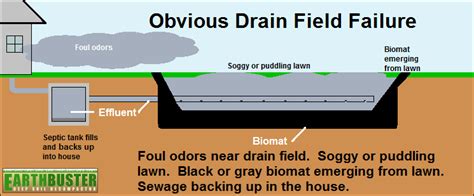The Mystery of the Missing Drain Field: Solved!
Septic system issues are a homeowner's nightmare. Imagine this: your septic system is failing, and you need a drain field inspection. But… the drain field is nowhere to be found! This seemingly impossible scenario is, sadly, more common than you might think. This article will explore the common reasons why drain fields go "missing," the investigative process involved in locating them, and ultimately, how to solve the mystery.
Why Can't I Find My Drain Field?
The most frustrating aspect of a missing drain field is the lack of readily available information. Unlike other home systems, septic systems aren't always meticulously documented. Many older homes lack comprehensive records, leaving homeowners scratching their heads (and digging in their yards).
H2: Age and Lack of Documentation:
Many older homes predate stringent septic system record-keeping regulations. Prior owners may not have understood the importance of detailed documentation, or the records may have been lost or misplaced over time. This is a significant factor in "missing" drain field cases.
H2: Poorly Marked or Unmarked Systems:
Even with documentation, the markings might be inaccurate or completely absent. Over time, markers can become overgrown, damaged, or simply washed away. This leaves homeowners with no visual clues to guide their search.
H2: Unusual or Hidden Locations:
Drain fields aren't always placed in the most obvious locations. Factors like topography, soil conditions, and previous landscaping modifications can influence placement, sometimes resulting in unexpectedly hidden drain fields. They might be tucked away under dense shrubbery, behind sheds, or even partially concealed by a slope.
Solving the Mystery: Locating the Missing Drain Field
Finding a hidden drain field requires a multi-pronged approach, blending old-fashioned detective work with modern technology.
H2: Checking for Existing Records:
The first step is to exhaust all avenues for locating existing records. This includes contacting:
- Previous Homeowners: If you know the previous owners, reach out and ask if they have any information on the septic system's location.
- County or Municipal Offices: Your local government might have records of permits filed for septic system installation.
- Real Estate Agents: If the property was recently purchased, the real estate agent might have access to some relevant documents.
H2: Visual Inspection and Ground Penetrating Radar (GPR):
Once record-searching is complete, it's time for a thorough visual inspection. Look for:
- Changes in vegetation: Areas with unusually lush or sparse vegetation may indicate subsurface drainage.
- Discoloration in the soil: Differences in soil color could highlight a buried drain field.
- Evidence of past excavation: Look for any signs of previous digging, such as disturbed earth or slightly sunken areas.
If these visual clues are inconclusive, consider using Ground Penetrating Radar (GPR). GPR technology employs radio waves to create a subsurface image of the area, revealing the location of buried pipes and other structures, including the drain field.
H2: Septic System Professionals:
If self-investigation proves fruitless, contacting a licensed septic system professional is crucial. They possess the expertise and equipment to accurately locate and assess the condition of your septic system. They can utilize advanced techniques such as:
- Dye Testing: Injecting a non-toxic dye into the system to track its flow and pinpoint the drain field.
- Specialized Cameras: Using cameras to inspect the pipes and assess the overall health of the system.
What Happens After the Drain Field is Found?
Once the drain field is located, the next step depends on its condition. If it's functioning properly, you can rest easy (and maybe add some clearer markings for future reference!). However, if the drain field is damaged or failing, you'll need professional remediation. This could involve repairs, replacement, or even a complete system overhaul.
Conclusion
The mystery of the missing drain field is a challenge that many homeowners face. By utilizing a systematic approach that combines historical research, thorough visual inspection, and the expertise of professionals, you can solve the mystery and ensure the proper function of your septic system. Remembering the importance of detailed septic system records for future homeowners is a crucial lesson learned from this often frustrating experience.

